Heinrich Himmler and the SS - A Study in Propaganda
Heinrich Himmler became leader of the Schutzstaffel (SS) in January 1929. At the time it consisted of 300 men. Himmler personally vetted all applicants to make sure that all were good "Aryan" types. Himmler later remembered that: "In those days we assembled the most magnificent Aryan manhood in the SS-Verfugungstruppe. We even turned down a man if he had one tooth filled."
Adolf Hitler. came to power in 1933. By the end of the following year the SS had 400,000 members. Eventually, Himmler came to the conclusion that the mass recruitment which had taken place was very damaging to the elite status of the SS and so in 1935 over 200,000 SS men were discharged on moral, racial and physical grounds. Himmler now introduced a complex five year enrolment procedure. Having been declared physically and racially suitable for SS membership, an eighteen-year-old youth became an applicant (bewerber). The following year he became a candidate (anwärter). At the end of his probationary period he swore the oath of alliance to Hitler. At twenty-one he became liable for military service which lasted two years. It was only on his return to civilian life that he became a full SS man.
David Low was a highly successful cartoonist. In 1927 Low was persuaded by Lord Beaverbrook to work at the Evening Standard. Although Beaverbrook was a strong supporter of the Conservative Party, he promised Low, a socialist, that he would have complete freedom to express his own radical political views. Low produced four cartoons a week and these were syndicated to 170 journals worldwide.
Low became a leading critic of Nazi Germany. This upset Beaverbrook who supported the policy of appeasement. As Low pointed out in his autobiography, Autobiography (1956): "Cartoons and leading articles often flatly contradicted one another, scandalizing the worthy souls who saw it as a serious defect in Lord Beaverbrook that he be not one-eyed." Low was attacked in the right-wing press as a "war-monger". Low's cartoons were banned in Germany and during a visit to the country, Beaverbrook was warmed by Joseph Goebbels that Low was in danger of having an "accident".
Primary Sources
(Source A) Anthony Rhodes, Propaganda: The Art of Persuasion: World War II (1987)
Goebbels' propagandists knew that visual impressions are extremely strong, that people may forget a newspaper article, but not a picture - if they see it often and its message is obvious. In this respect the poster had certain advantages over the other forms of propaganda. A pamphlet or a newspaper could be thrown away, unread; the radio turned off; political meetings not attended; likewise the cinema. But everyone at some time or other walked in the streets. The poster could not be avoided. It was one thing to hear about Hitler's strength of character, sincerity, honesty, simplicity, etc.; it was quite another to see these qualities glaring down from a huge head-and-shoulders portrait, ten times life-size.
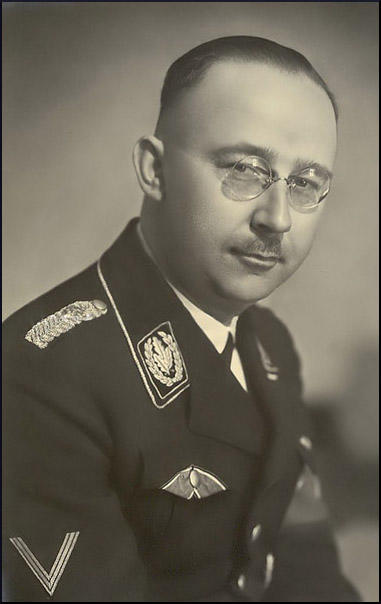
(Source C) Richard Evans, The Third Reich in Power (2005)
From 1935 he (Himmler) required proof of pure Aryan ancestry, as he termed it, going back to 1800 for the rank and file, 1750 for officers. Serving and aspirant SS men combed the parish registers for proof of their racial purity, or hired professional genealogists to do it for them. Recruits now had to undergo a physical examination to confirm their 'Aryan' qualities; Himmler considered that in time, with suitably directed racial evolution, only blond men would be accepted. Already since 1931 every SS man had to receive special permission from Himmler or his office to get married; it would only be granted if his fiancee was racially suitable as well."
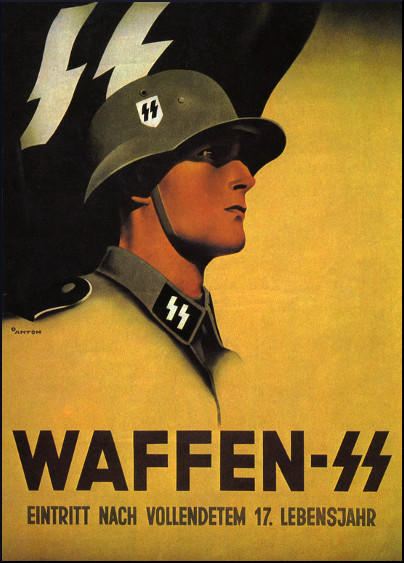
(Source E) David Low, Autobiography (1956)
I had been told often enough that the British never had taken propaganda seriously, because they believed in themselves so much as to regard the rightness of their causes to be self-evident. Certainly, although they were fighting what was ostensibly a war of ideas, in striking contrast to the Nazis, the Russians, the French and the Americans they placed little value upon the presentation of their case to the enemy in cartoons.
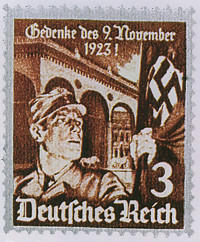
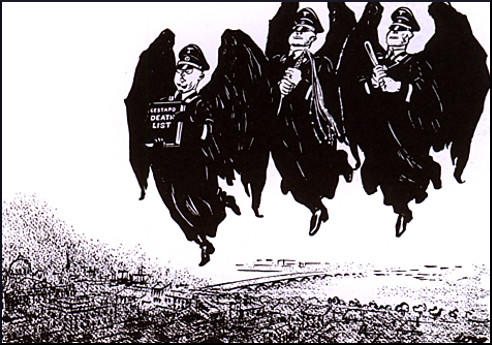
(Source H) David Low was attacked in the press as a "war-monger" because of his hostility towards Neville Chamberlain and his policy of appeasement. Margot Asquith, the wife of the former Prime Minister, Herbert Asquith, wrote to Low about his cartoons on 22nd April, 1938.
I thought your cartoon on Wednesday (20th April) in the Evening Standard both cruel and mischievous. I know the P.M. - do you? He is a man of iron courage, calm and resolution. Neville is doing the only right, wise, thing, unless you want war. Hate, threats - which you can't carry out - and suspicion do not advance peace, and if the P.M. fails we can always go back to the policy of the war-mongers - Winston Churchill and Co. I think Neville has saved the world by his courage - and so do much cleverer people than I.
(Source J) Boris Efimov, a Soviet cartoonist, letter to David Low (17th September, 1942)
I wish to tell you, Mr. Low, with interest I and other Soviet artists have been and are now following your magnificent work, which has won for you the well-deserved fame of the best cartoonist in the world.
The future of history hangs in the balance. On one hand light, progress, democracy, life; on the other darkness, corruption, barbarism, death, that is Hitlerism. I am happy, dear Mr. Low, that in this decisive hour I am with you - a great artist whose creative work I regard with admiration and from whose works I learn.
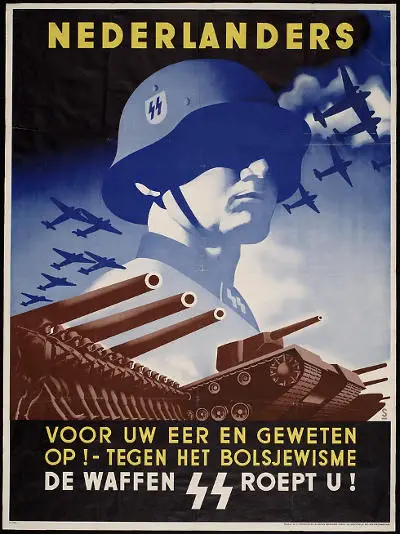
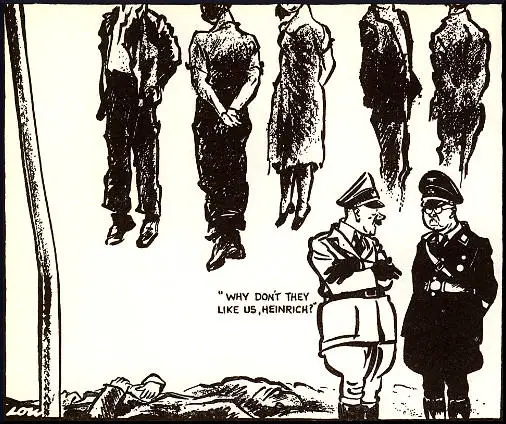

Student Activities
Question 1. According to Richard Evans (source C) what did Himmler do in 1935?
Question 2. Why was David Low considered a "war monger"? Do you think the people who produced sources H and J considered him to be a "war monger"?
Question 3: Read source E. Why did Low believe the "British never had taken propaganda seriously".
Question 4: Look carefully at Low's cartoons, G, I and L. Do you consider these cartoons as being examples of "propaganda"?
Question 5. Study sources A, B, D, F, K and M. Compare the value of official photographs, posters, stamps and cartoons as propaganda.
Answer Commentary
A commentary on these questions can be found here
Download Activity
You can download this activity in a word document here
You can download the answers in a word document here

